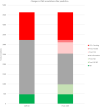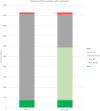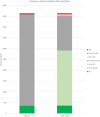A continuous in silico learning strategy to identify safety liabilities in compounds used in the leather and textile industry
- PMID: 36781432
- PMCID: PMC10025185
- DOI: 10.1007/s00204-023-03459-7
A continuous in silico learning strategy to identify safety liabilities in compounds used in the leather and textile industry
Abstract
There is a widely recognized need to reduce human activity's impact on the environment. Many industries of the leather and textile sector (LTI), being aware of producing a significant amount of residues (Keßler et al. 2021; Liu et al. 2021), are adopting measures to reduce the impact of their processes on the environment, starting with a more comprehensive characterization of the chemical risk associated with the substances commonly used in LTI. The present work contributes to these efforts by compiling and toxicologically annotating the substances used in LTI, supporting a continuous learning strategy for characterizing their chemical safety. This strategy combines data collection from public sources, experimental methods and in silico predictions for characterizing four different endpoints: CMR, ED, PBT, and vPvB. We present the results of a prospective validation exercise in which we confirm that in silico methods can produce reasonably good hazard estimations and fill knowledge gaps in the LTI chemical space. The proposed protocol can speed the process and optimize the use of resources including the lives of experimental animals, contributing to identifying potentially harmful substances and their possible replacement by safer alternatives, thus reducing the environmental footprint and impact on human health.
Keywords: Computational toxicology; In silico; Leather and textile industry; Machine learning; QSAR; Read across.
© 2023. The Author(s).
Conflict of interest statement
The authors declare no conflict of interest.
Figures





References
-
- Conto A. The EU chemical strategy for sustainability towards a toxic-free environment. Chimica Oggi/chem Today. 2021;39(1):40–41.
MeSH terms
Grants and funding
LinkOut - more resources
Full Text Sources

